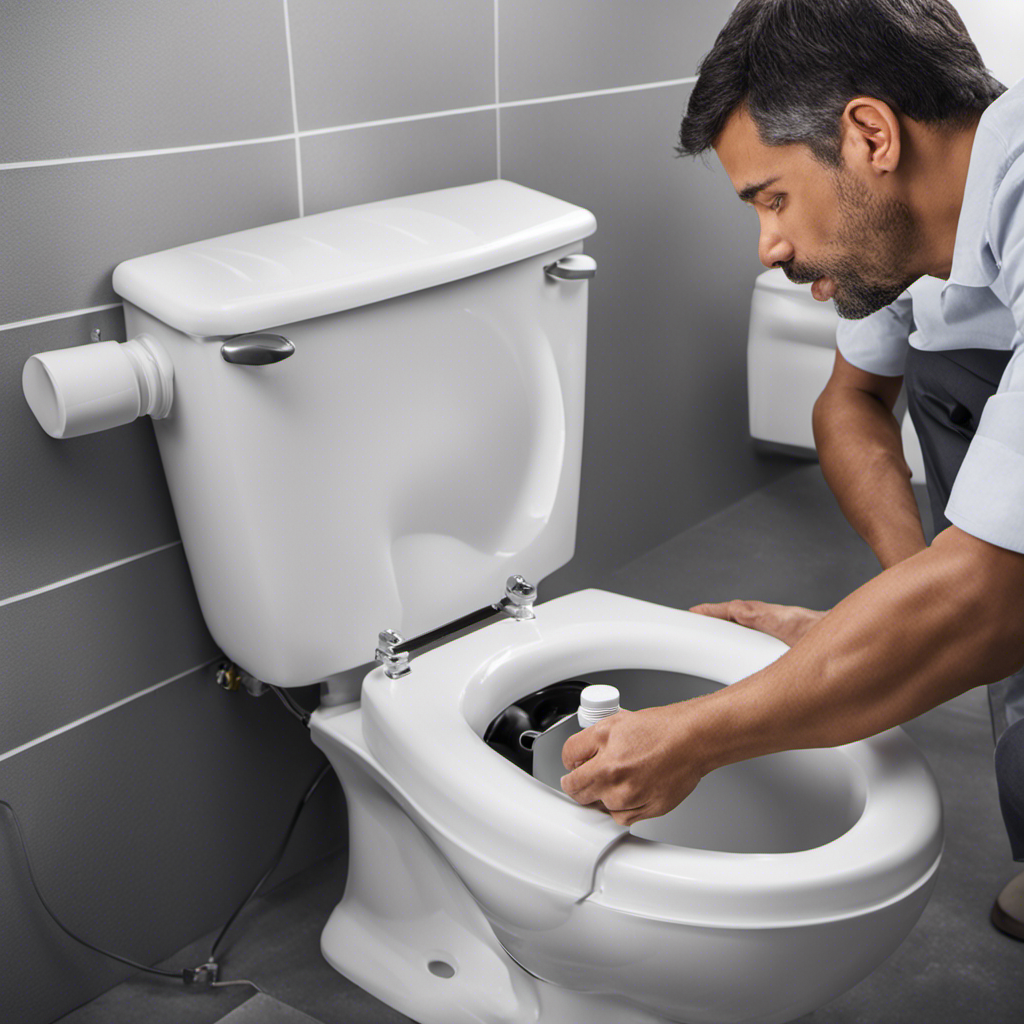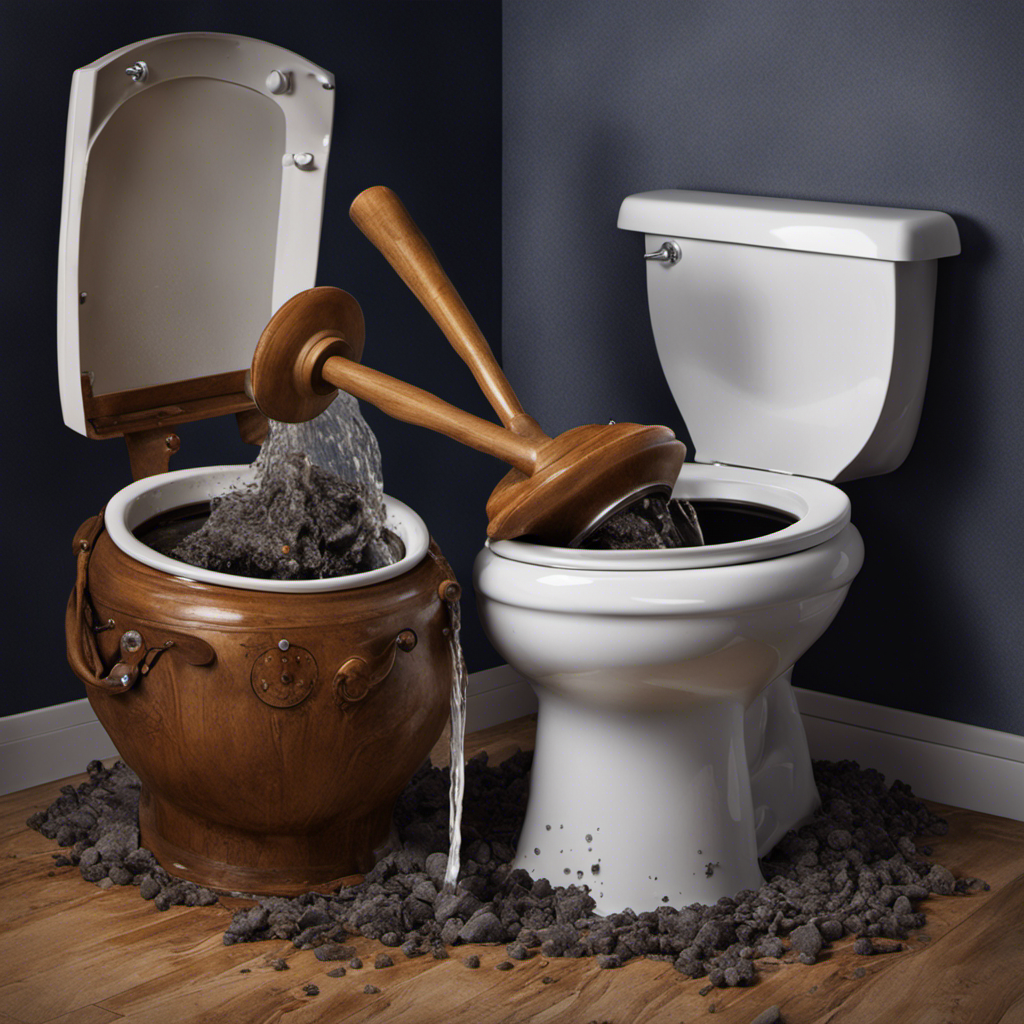Hey there! Ever had that annoying problem of a running toilet tank? Well, fear not, because I’ve got you covered.
In this article, I’ll show you step-by-step how to fix it yourself, saving you time and money.
We’ll dive into the causes of a running toilet tank, how to shut off the water supply, and even how to check and adjust the float and fill valve.
So, let’s roll up our sleeves and get that toilet tank running smoothly again!
Key Takeaways
- The most common causes of a running toilet tank are a faulty flapper valve and a faulty fill valve.
- The water supply to the toilet tank can be shut off by turning the shut-off valve clockwise.
- The float and fill valve should be checked and adjusted after shutting off the water supply to prevent continuous water flow.
- The flapper valve should be inspected and cleaned regularly to maintain proper functioning, and the chain length should be adjusted for proper sealing.
Identifying the Cause of a Running Toilet Tank
The first step in fixing a running toilet tank is identifying the cause of the issue.
There are several common toilet problems that can cause a toilet tank to continuously run.
One possible cause is a faulty flapper valve. The flapper valve is responsible for sealing the tank and preventing water from continuously flowing into the bowl. If the flapper valve is worn out or not sealing properly, it can cause water to continuously flow into the toilet bowl, resulting in a running toilet.
Another possible cause is a faulty fill valve. The fill valve controls the flow of water into the tank. If the fill valve is not functioning correctly, it can lead to a continuous flow of water into the tank, causing the toilet to run.
Shutting Off the Water Supply
To stop the flow of water, you’ll need to shut off the water supply to the toilet. Common water supply issues can cause a running toilet tank, so troubleshooting water flow problems is essential.
First, locate the shut-off valve, usually found near the base of the toilet or on the wall behind it. Turn the valve clockwise to shut off the water supply. If the valve is difficult to turn or doesn’t stop the flow completely, you may need to use pliers or a wrench.
Once the water supply is shut off, you can proceed to fix the running toilet tank. Remember to turn the water supply back on once the repairs are complete.
Checking and Adjusting the Float and Fill Valve
Once you’ve shut off the water supply, you can check and adjust the float and fill valve.
Start by removing the tank lid and locating the float. The float is usually a plastic or rubber ball attached to an arm. If the float is set too high, it can cause the fill valve to continuously run. To adjust the float, simply bend the arm downwards to lower the float level.
Next, inspect the fill valve for any signs of damage or debris. Sometimes, the fill valve may need to be replaced if it is not functioning properly. Troubleshooting the fill valve involves checking for leaks, ensuring proper water flow, and cleaning or replacing any clogged components.
Inspecting and Cleaning the Flapper Valve
Inspecting and cleaning the flapper valve is an essential step in maintaining a properly functioning toilet. The flapper valve is responsible for controlling the flow of water from the tank to the bowl during a flush. Over time, it can become dirty or worn out, leading to problems such as a constantly running toilet or incomplete flushes.
To ensure the flapper valve is in good condition and operating correctly, follow these steps:
- Remove the tank lid and locate the flapper valve.
- Inspect the flapper for any signs of damage or debris.
- Clean the flapper using a mild detergent and a soft brush.
- Check the chain length and adjust if necessary to ensure proper sealing.
- Troubleshoot the water level by adjusting the float or fill valve.
Replacing Faulty Components
Replacing faulty components is necessary if the flapper valve cannot be repaired or is beyond repair. When troubleshooting common issues with a running toilet tank, it’s important to identify the faulty component and replace it promptly to avoid further leaks and water wastage. Here is a table that summarizes the common faulty components and their solutions:
| Faulty Component | Possible Solution |
|---|---|
| Fill Valve | Adjust or replace |
| Flush Valve | Replace |
| Float | Adjust or replace |
| Flapper | Repair or replace |
If you notice leaks or the toilet tank continuously running, start by inspecting these components and determine which one needs to be replaced. Remember to turn off the water supply before starting any repairs. By replacing faulty components, you can effectively fix a running toilet and prevent any further water wastage.
Conclusion
In conclusion, fixing a running toilet tank is a simple task that can save you both water and money. By identifying the cause, shutting off the water supply, and checking and adjusting the float and fill valve, you can easily stop the continuous flow of water.
Additionally, inspecting and cleaning the flapper valve, as well as replacing any faulty components, ensures a properly functioning toilet.
So, don’t let a running toilet tank drain your resources, take action and fix it today!










